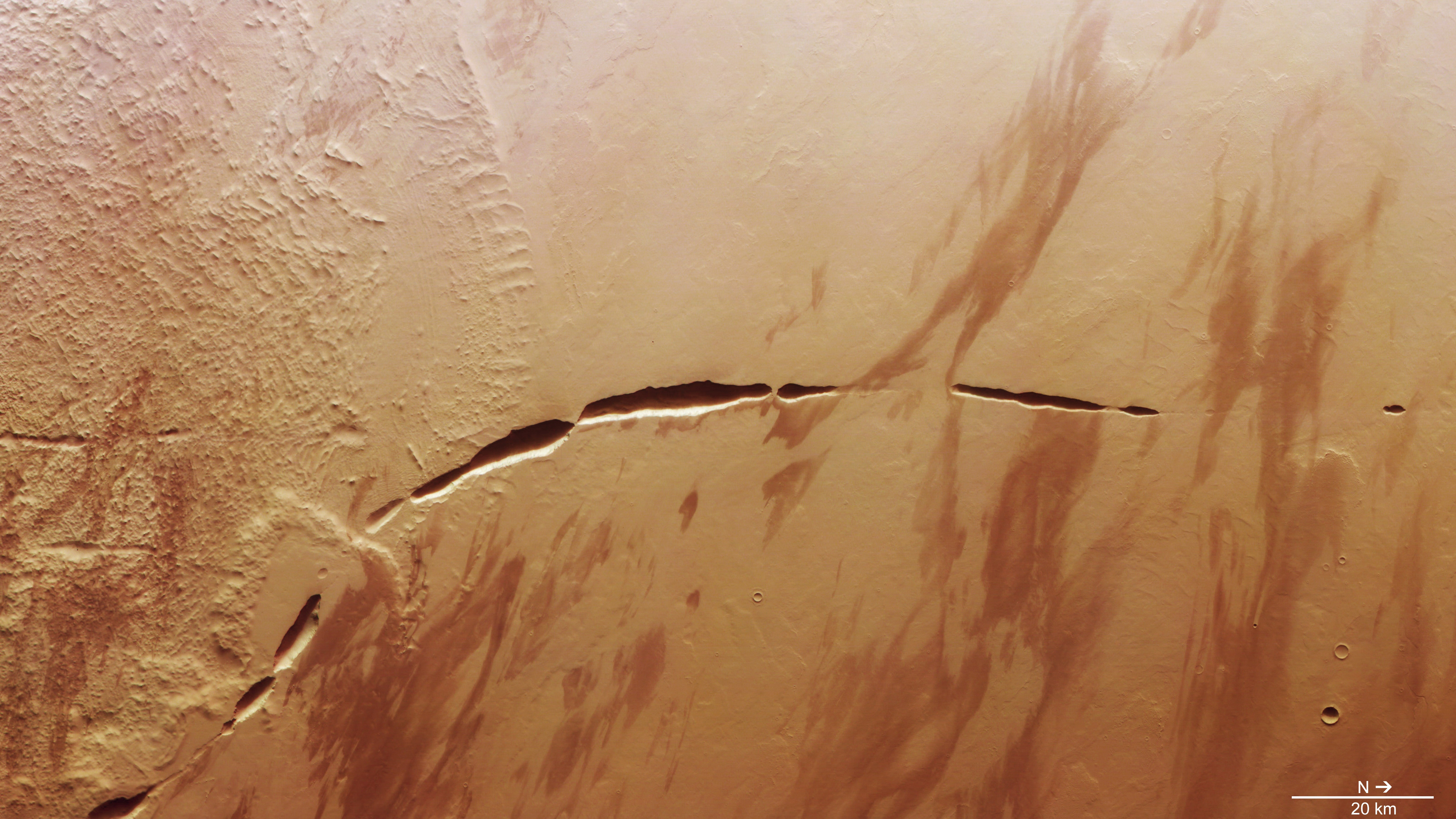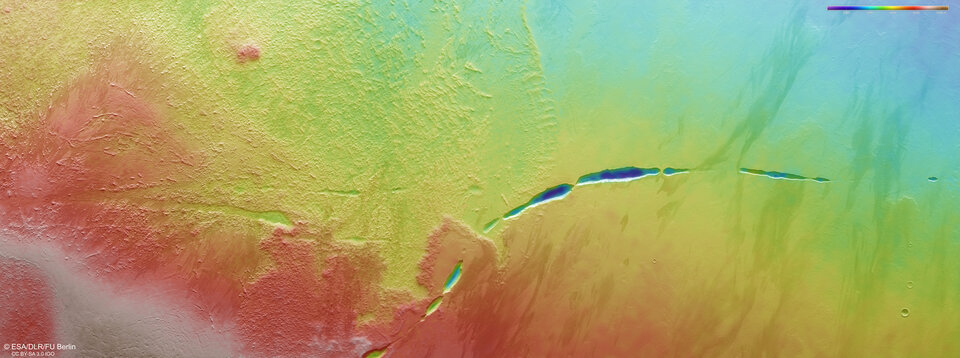Mars orbiter captures Red Planet scar that's longer than the Grand Canyon (image)
There are lots of "scars" on Mars, but not many have been seen with such excellent resolution.

New images published by the European Space Agency have captured a 600-kilometer-long (373-mile-long) snaking scar on Mars' surface in greater detail than ever before. The Red Planet is full of scratches and scars, and this one, named Aganippe Fossa, is another of these ditch-like grooves with steep walls — more specifically, however, Aganippe Fossa is what's called a "graben."
"We're still unsure of how and when Aganippe Fossa came to be, but it seems likely that it was formed as magma rising underneath the colossal mass of the Tharsis volcanoes caused Mars’s crust to stretch and crack," ESA officials wrote in a recent press release.
As is common in planetary nomenclature, the name "Aganippe Fossa" has its roots in classical mythology. Aganippe, daughter of the river Termessos, was a nymph associated with a spring found at the base of Mount Helicon in Greece. In homage to its naming origins, Aganippe Fossa appears at the base of one of Mars' largest volcanoes, Arsia Mons. "Fossa" is then derived from the Latin term for ditch or trench, and refers to a long, narrow depression on the surface of a planet or moon.
The recently published images owe themselves to ESA's Mars Express, Europe's first mission to the Red Planet, which has been orbiting Mars since 2003. Although its lander, Beagle 2, was lost, the orbiter remains conducting a global investigation of Mars. It maps minerals, studies the atmosphere, probes beneath the crust and investigates the planet's blob-shaped moons, Phobos and Deimos.
Related: Largest canyon in the solar system revealed in stunning new images
Mars Express captured the new images of Aganippe Fossa with its high resolution stereo camera and revealed the varied surface features of Mars in great detail, showing both clustered, uneven hills and smooth, gently sloping cliffs covered in debris — referred to as hummocky and lobate terrains, respectively.

These terrains are characteristic of Arsia Mons's ring-shaped "aureole," the ESA press release states, in reference to a 100,000-square-kilometer (38,610-square-mile) disk around the base of the volcano, possibly associated with ancient glaciers.. "Intriguingly," the statement continues, "this aureole has only built up on the northwestern flank of the volcano, likely due to prevailing winds from the opposite direction controlling where ice settled over time."
Get the Space.com Newsletter
Breaking space news, the latest updates on rocket launches, skywatching events and more!
The team also describes windblown dust and sand dynamics of this region of Mars, which create "zebra-like" patterns on the planet's surface as a result of darker material getting deposited on lighter ground. "The surface here also shows evidence of lava flows, dating from when the volcano was active." the scientists wrote.
Aganippe Fossa is one of many classical albedo features on Mars, which refers to the light and dark features that can be seen on the planet through even an Earth-based telescope. With space-based orbiters, astronomers have been given unprecedented views of the planet's surface and its intriguing topography.
"The mission has been immensely productive over its lifetime, creating a far fuller and more accurate understanding of our planetary neighbor than ever before," ESA scientists said.
Join our Space Forums to keep talking space on the latest missions, night sky and more! And if you have a news tip, correction or comment, let us know at: community@space.com.

A chemist turned science writer, Victoria Corless completed her Ph.D. in organic synthesis at the University of Toronto and, ever the cliché, realized lab work was not something she wanted to do for the rest of her days. After dabbling in science writing and a brief stint as a medical writer, Victoria joined Wiley’s Advanced Science News where she works as an editor and writer. On the side, she freelances for various outlets, including Research2Reality and Chemistry World.









